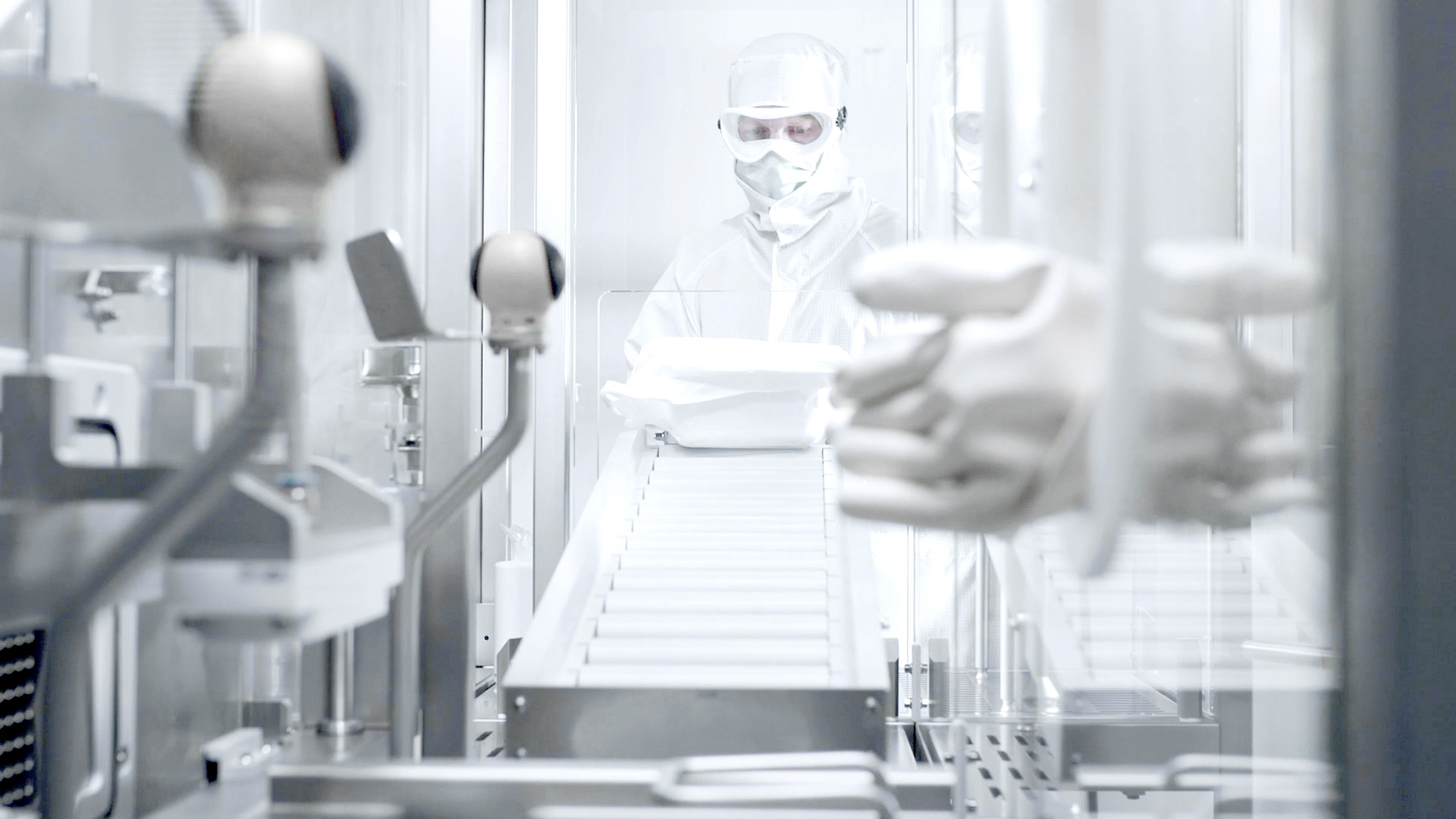
Syringe filling machines - vials and cartridges
From product development to commercial filling
Over the years, there has been a consistent rise in the use of ready-to-use packaging containers (RTU) within the pharmaceutical industry. This can be attributed to various factors such as the need for smaller batch sizes, heightened demands for flexibility and efficiency in pharmaceutical production , as well as most importantly, the decrease in prices for RTU containers - syringes, vials and cartridges.
Our GMP compliant aseptic filling machines have the ability to process pre-sterilized glass and polymer objects from a vast range of suppliers. A format changeover is possible without the use of any tools and thus creates only minimal set-up work, this shortens the downtime and enables maximum flexibility in aseptic processing. The automated syringe fillers from groninger are suitable for a diverse range of applications within the pharmaceutical industry, from start-ups to CDMOs and big pharma. Whether you're producing small batches of specialty drugs or high-volume products for mass distribution, groninger's machines can help you streamline your pharmaceutical production process, reduce waste, and ensure consistent and accurate dosages every time.
Unlike to our vial filling machines the nested RTU containers are brought to the filler in the clean room, in single or double bags, where they are unpacked in a semi or fully process. There are two main approaches for transferring the nested material into the aseptic area. The first option is outside decontamination with E-Beam or by using H2O2. The other option is the no-touch transfer (NTT).
Steps of our automated syringe filling machines as well as for vials and cartridges
Infeed
Outside decontamination, irradiation or aseptic no-touch transfer (NTT)
The transfer of the containers to the aseptic process zone (grade A) is a crucial in the pharma industry. With the new Annex 1 becoming effective, there are new respectively expanded requirements for this process step. It gives a precise description on how to introduce packaging material into the grade A environment, especially focusing on the reduction of the risk of contamination. This is reflected in various points within the Annex 1.
Particularly, in the case of small and medium-sized production quantities, the so-called no-touch transfer (NTT) provides an option for transfer, which is becoming increasingly important alongside decontamination with E-Beam or H2O2.
As the foremost provider, groninger has been at the forefront of pharmaceutical machinery manufacturing. We were among the pioneers in liquid filling machine technology, integrating E-Beam or no-touch transfer technology into our equipment, and obtaining regulatory approval for GMP production.
In the area of non-contact aseptic transfer, it is differentiated between different stages of development:
No-touch transfer (NTT) basic
With the compact NTT basic, the RTU objects are packed in two plastic bags and delivered to the line. The outer bag is manually cut open under a class A laminar air flow and then the tub in the inner bag is pushed over into the class B zone. There the bag is automatically clamped, cut and the tub is transferred semi-automatic to the aseptic filling area (isolator class A/ISO 5).
No-touch transfer (NTT) advanced
The nested objects are also delivered in two bags for the fully automated NTT. The outer bag is clamped manually or automatically, cut open, and the tub in the inner bag is moved over to Class B. This is followed by fully automated bag stretching, followed by fully automated clamping and cutting. The tub is then transported to the aseptic core area (clean room class A/ISO 5).
H2O2
For decontamination with H2O2, a single-packaged bag is manually cut open under laminar class A air floor and transferred to the decontamination chamber. A 6-log outside decontamination of the RTU tub is then carried out using H2O2 and a manual or automatic transition to class A.
E-Beam
For the E-Beam outside decontamination, single bagged RTU containers are unpacked and fed into an e-beam chamber at up to seven units per minute. A 6-log outside decontamination of the RTU tub is carried out with H2O2, followed by an automatic transfer to the aseptic core zone.
Opening
Opening tubs without risk of contamination
groninger employs a unique and patented technology for opening tubs, which involves the use of pull-off rollers. The first step in this process is to heat the adhesive of the packaging lid to loosen the adhesive bond. This technique minimizes the generation of particles when the lid is pulled off.
The vacuum rollers then pull off the lid and liner simultaneously at a uniform speed, ensuring a highly process-reliable and reproducible outcome. This method also ensures ideal first-air contact, with no movement above the opened containers, which prevents the primary packaging from becoming contaminated with particles.
Furthermore, this technology enables continuous processing of RTU syringes, vials and cartridges, regardless of the machine's output or the actual batch size. It provides reliable and consistent results, improving the efficiency and productivity of your production process.
By utilizing groninger's pull-off roller technology, you can streamline your pharmaceutical manufacturing process and ensure the highest level of product quality and safety. This innovative approach is suitable for a wide range of applications within the pharmaceutical industry, from small-batch production to large-scale manufacturing.
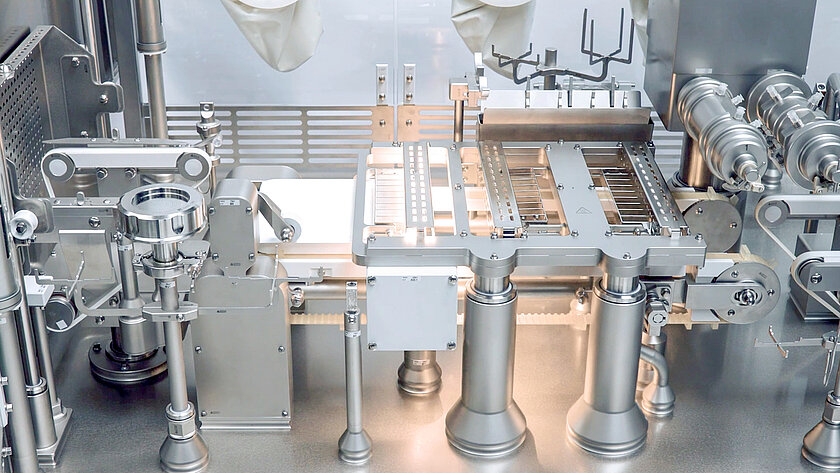
Filling & closing
Filling and closing of RTU containers
How to fill a pre-filled syringe, vial or cartridge? There are two basic technological approaches for filling a liquid pharma product into a RTU container: It is differentiated between a automatic sterile filling machine with a Statistical In-Process-Control (IPC) and fillers with a 100% In-Process-Control (IPC). The decisive difference between the two methods is whether and when the objects are lifted out of the tub or nest and weighed.
Other steps like filling or stopper placement with vacuum, gassing of oxygen sensitive products as well as the use of various filling systems (i.e. rotary piston pumps, peristaltic pumps or time-pressure system) can be realized with both types.
Statistical In-Process-Control (IPC)
For fillers with statistical IPC, the objects can remain in the nest during filling and stoppering. The number of weighing processes can be set via the user interface, the objects are lifted out with robotic arms and weighed before and after filling.
With these pharmaceutical syringe filling machine also suitable for cartridges, the objects remain in the nest after they have been closed and can be inspected after they have been removed from the aseptic area.
The procedure may be different for a vial. If they are closed with integrated stopper caps, the process is similar to that for a pre-filled syringe and cartridge. However, if they are to be sealed in the traditional way with stoppers and aluminum caps, the vials are lifted out of the nests by a robotic arm and individually fed to the crimping machine.
Aseptic filling equipment with 100% In-Process-Control (IPC)
Automated syringe fillers (as well as vials and cartridges) with 100% IPC are characterized by the fact that all containers to be filled are brought individually into a transport system after the lid and liner have been removed from the tub.
Since the separation is done with a robot arm, this only has a minimal impact on the laminar flow around the objects. Manipulated they can also be weighed individually. With these systems, it is possible to define the filling range even more precisely, since direct adjustment is just as possible as redosing or replacing missing stoppers.
The smartfill feature established by groninger also minimizes product loss when starting up or running empty.
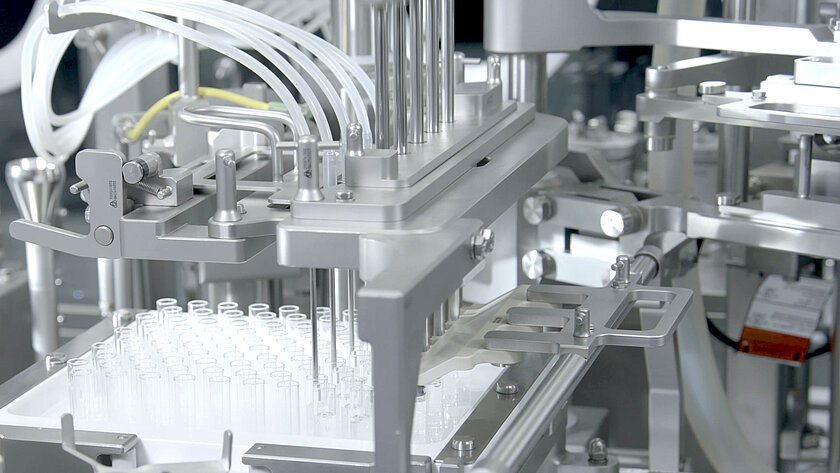
Freeze drying
Integration of freeze drying processes
Freeze drying has been used successfully for years to increase the shelf life of liquid pharmaceuticals. For this, various suppliers provide suitable and proven technologies, which can be integrated into groninger filling equipment.
From manual FD loading up to automatic with up to 600 objects per minute, we have already gained experience with almost all lines worldwide. This enables us to easily implement the integration of freeze dryers and loading solutions according to your specific requirements. You select the best technology, we will integrate it into our line concept.
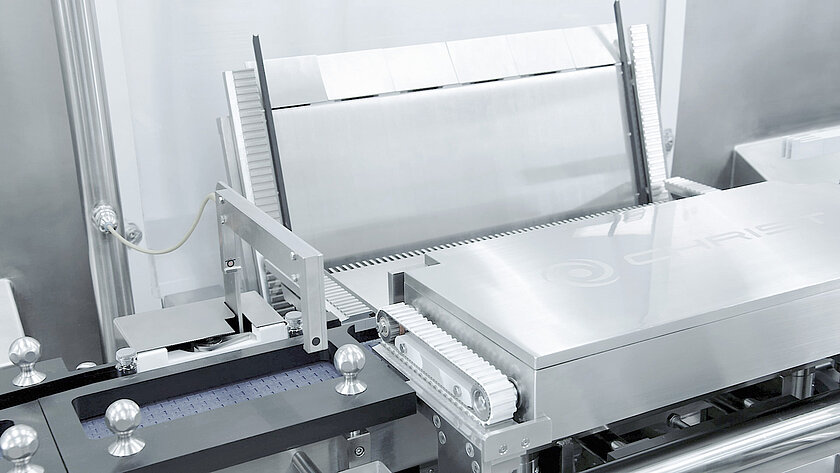
Sealing
The sealing is performed at the end of every vial processing with classic aluminum caps. groninger relies on the patented and proven single-disk flanging principle. All vials are closed with a single, adjustable flanged disc. With the appropriate setting, the objects can be sealed reliably in various performance classes from 10 to 600 objects per minute.
Advantages in comparison
- The line can be converted much more quickly,
- the process risk is reduced, and
- errors in the process can be detected and eliminated without delay.
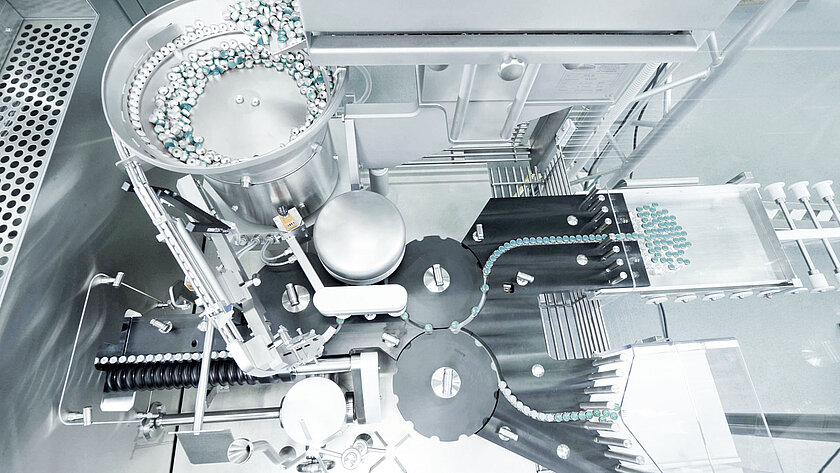
External cleaning
External cleaning of filled products
In the processing of toxic products, operator protection is certainly a priority alongside product protection. Therefore, requirements for the external cleaning of the filled vials are increasing for these products.
Whether in liquid form or as a powder after a freeze-drying, toxic components are not uncommon in personalized medicines. groninger has focused its work on their processing and offers an extensive portfolio of solutions that ensure external cleaning.
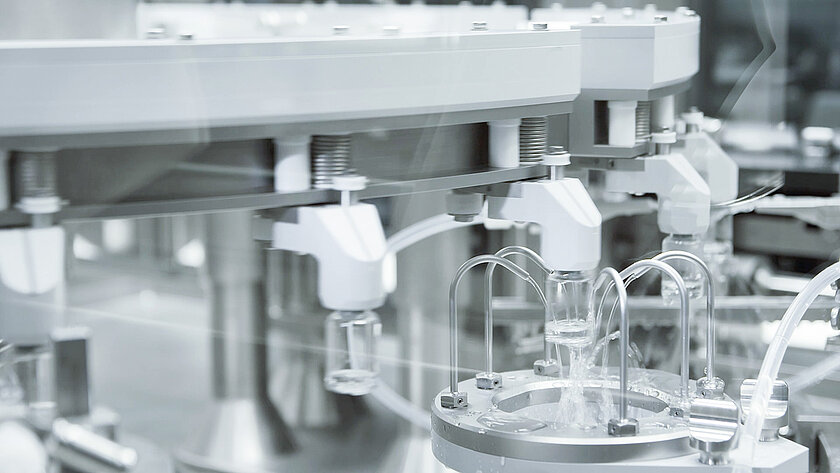
Downstream processing
When the containers has been pharmaceutically closed, the downstream processing of the packaging begins. These steps can usually be carried out outside of traditional clean rooms.
Possible work steps in this phase include:
- Inspection,
- labeling,
- installing a finger flange or a safety device and/or
- screwing in the piston rods.
It is only after these work steps that the goods are packed in the final packaging.
groninger always aims for an intergral solution. As a result, we aren't only contributing our own expertise in assembly and labeling, but also cooperate very closely with well-known line manufacturers in the area of inspection and final packaging.
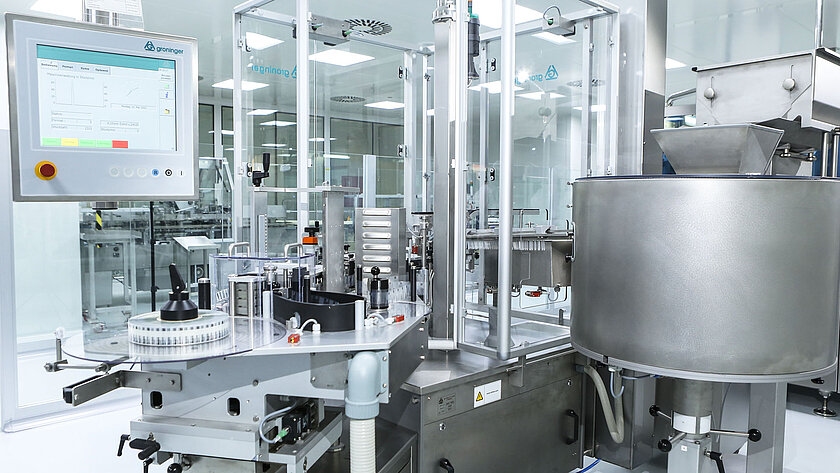
Excellent line concepts for nested RTU syringes, vials and cartridges
As the leader in nest filling, we have perfected the efficient processing of pre-sterilized objects in the nest. Our technologies prevent any microbiological contamination. High flexibility, short changeover times and excellent quality complete our performance. Innovative, first-class and absolutely safe: groninger technology – for pharmaceutical companies worldwide.
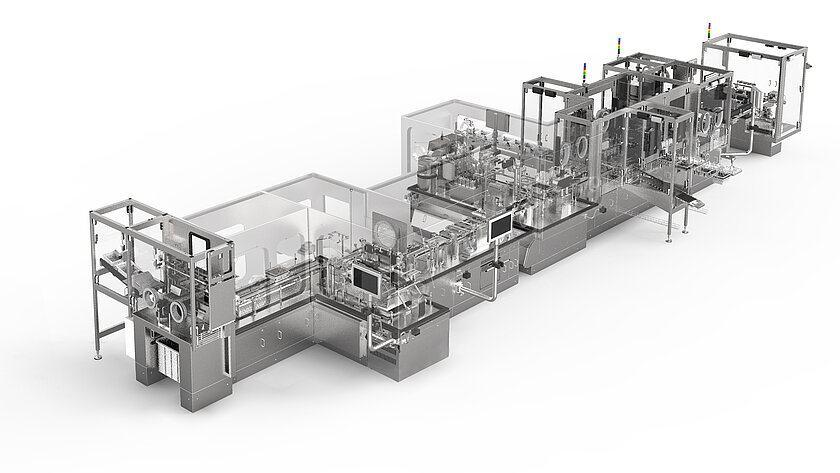
“Stand-alone line” with performance up to 80 objects per minute
- All common ready-to-use syringes, vials and cartridges in a tub/nest configuration on one platform
-
All common filling systems possible
-
Movable system
-
Standard gassing and vacuum functions
-
Version for oRABS
Performance of 80 - 200 objects per minute
- All common ready-to-use syringes, vials and cartridges in a tub/nest configuration on one platform
-
All common filling systems possible
-
Standard gassing and vacuum functions
-
smartfill for minimum product loss
-
Manual to fully automatic handling of all processes
-
Automated in-process control (IPC)
-
Design for isolators, open and closed RABS
Performance of 200 - 400 objects per minute
- All common ready-to-use syringes, vials and cartridges in a tub/nest configuration on one platform
-
All common filling systems possible
-
Standard gassing and vacuum functions
-
smartfill for minimum product loss
-
Manual to fully automatic handling of all processes
-
Automated in-process control (IPC)
-
Optional: line configuration with 100% in-process control (IPC)
-
Design for isolators, open and closed RABS
Performance of 400 - 1,000 objects per minute
- All common ready-to-use syringes, vials and cartridges in a tub/nest configuration on one platform
-
All common filling systems possible
-
Standard gassing and vacuum functions
-
smartfill for minimum product loss
-
Manual to fully automatic handling of all processes
-
Automated in-process control (IPC)
-
Optional: line configuration with 100% in-process control (IPC)
-
Design for isolators, open and closed RABS
Filling and closing nested RTU packaging containers
groninger's integral line concepts for processing pre-filled syringes (PFS Syringes), vials and cartridges offer a time-saving solution that eliminates the need for lengthy planning phases. Our comprehensive approach provides a tailored solution that can meet a range of demands.
At the heart of our "ready engineered" philosophy lies a commitment to delivering a streamlined solution that bypasses lengthy planning and construction phases. Instead, you can expect a well-considered line concept that offers maximum flexibility and ample design freedom. Drawing on decades of experience working in collaboration with our partners, we have integrated our expertise in processes and lines into these concepts.
flexfill
Solution for processing syringes, vials and cartridges of nested ready-to-use packaging.
UFVN
Processing RTU containers at up to 400 units per minute with 100% in-process-control.
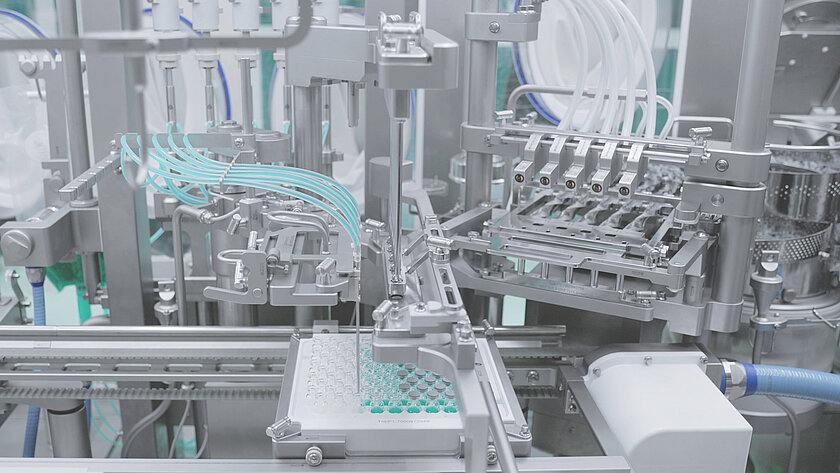
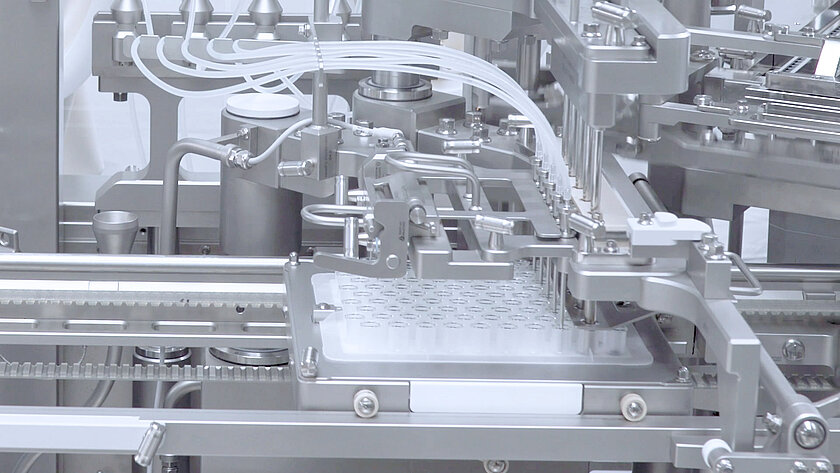
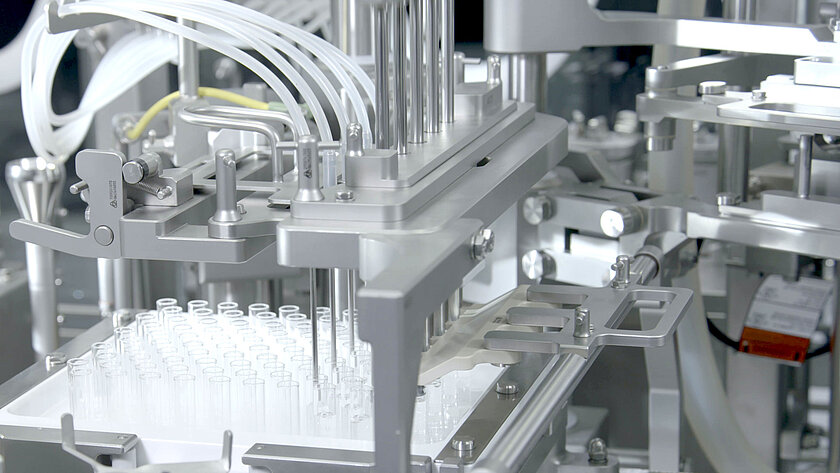
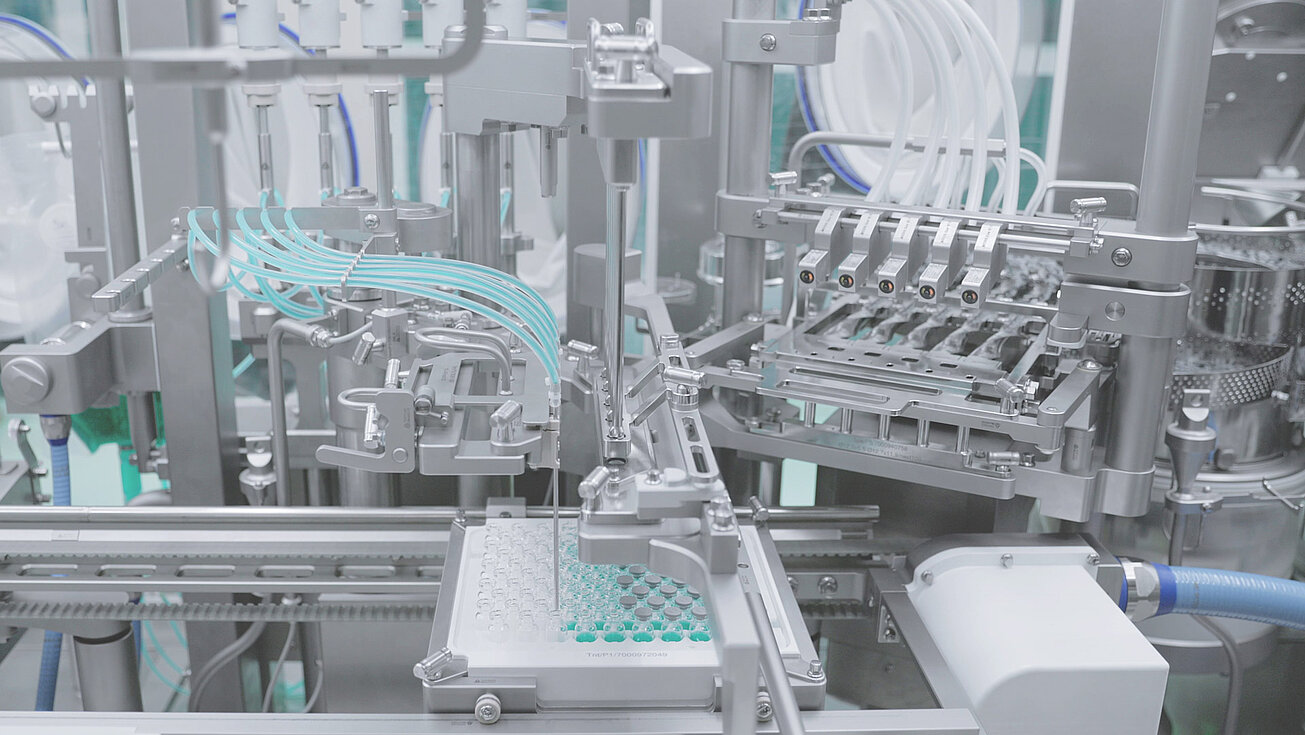
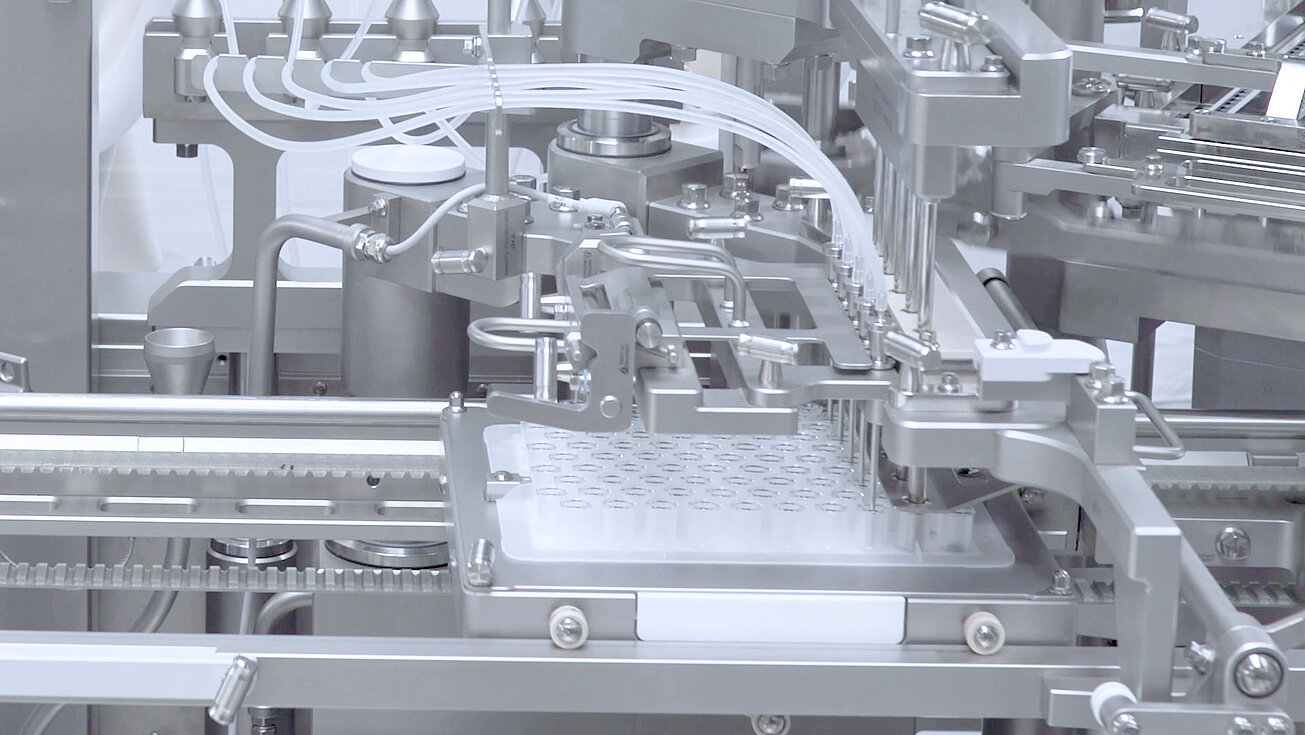
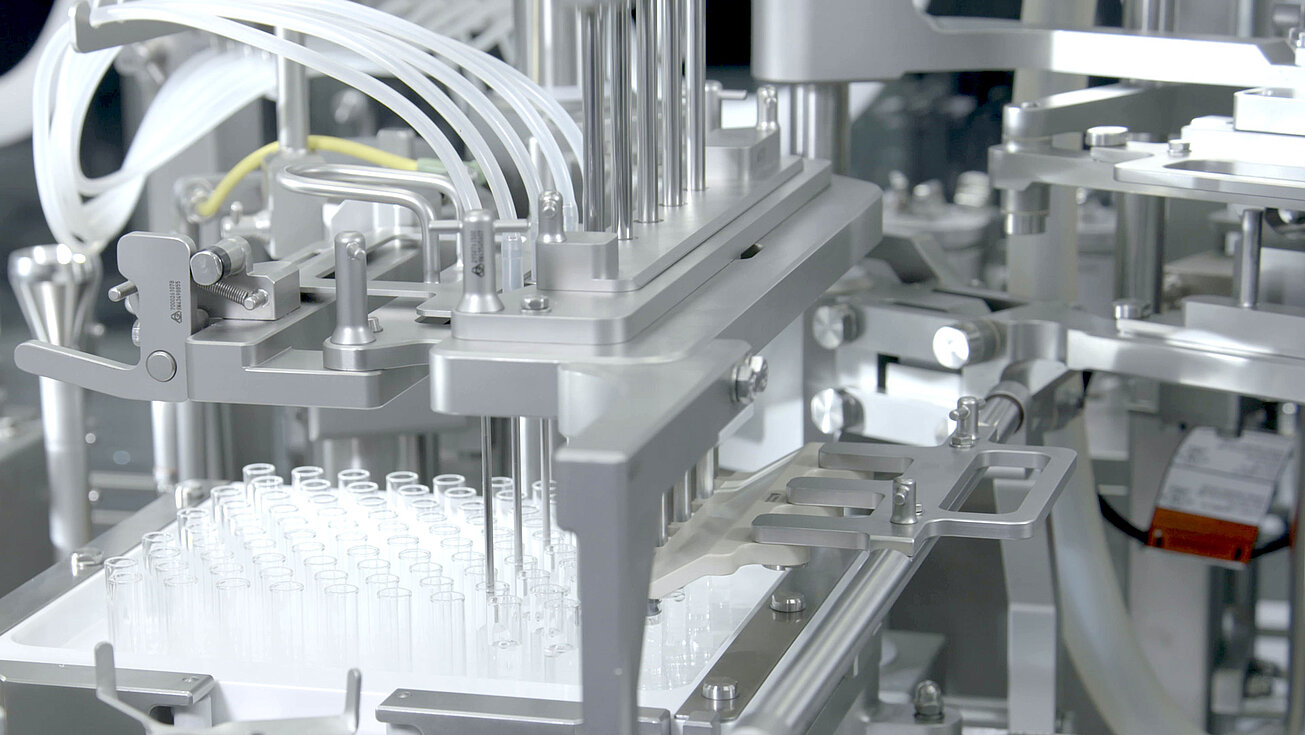


![[Translate to English:] Tischmaschine zum Füllen von Vials, Spritzen und Zylinderampullen](/fileadmin/_processed_/a/4/csm_groninger-labworx-teaser_94ece22454.jpg)




